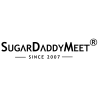LinkedIn groups used to be good, right? There used to be a lot of useful discussions and connection opportunities - and given the professional focus of the platform, providing a networking space within the app makes perfect sense.
But then they got bad.
Spammers saw the opportunity to push their messages, with groups generating an inordinate amount of notifications, both via the LinkedIn feed and via email. Using them as a direct-connector to people's inboxes, marketers ruined groups, filling them with more and more promotional messages till that's all that was left. And then people switched off, and groups on LinkedIn, for a long time, seemed done and dusted. Till LinkedIn, earlier this year, hinted at a comeback.

Those changes, however, didn't amount to much. In August, LinkedIn launched its re-vamped groups experience, which removed some handy functions and added in some new ones, including an updated notification structure to reduce spam, and the capacity to add video, and other content types, into group posts.
Which is fine, it's helpful to a degree. But it didn't really give LinkedIn groups much of a push.
But LinkedIn's not done yet - in a new post on the LinkedIn Engineering blog, the platform has outlined the technical elements of its new groups process, which explains how groups now function on a completely separate infrastructure, which could lead to new opportunities.
Among the key notes of interest:
- LinkedIn has improved the relevance of its group notifications stream, which is now able to use the same relevance tools as the main LinkedIn feed. "The new Groups product leverages this notifications platform to deliver a consistent experience across LinkedIn by sending relevant and timely notifications. Content creators can now focus solely on getting their message out and not be distracted by how it’s delivered. They can rely on the platform to deliver it to members via a channel that’s most optimal for them (push, in-app, email)."
- Groups also now leverage the same spam filtering process as the main LinkedIn feed - so if you're happy with your overall experience on LinkedIn, you'll likely be more satisfied with groups.
- Because groups now operate on their own operational stream, LinkedIn is also now able to add in any new features you see in the main LinkedIn feed. This is how they've been able to add in video and GIF posting, and it'll enable LinkedIn to offer improved integration of all new functionality within groups moving forward.
- LinkedIn has improved group admin via mobile, which, it says, is now in "parity with our web admin experience".
All of these, of course, don't add much functionally, and there's still the issue of getting users to come back to LinkedIn groups. But the updates are encouraging, and could see LinkedIn groups return to relevance. Maybe.
Definitely, the changes that LinkedIn has implemented in its main feed have proven effective - as noted in Microsoft's latest performance report, LinkedIn is now seeing 'record levels of engagement', which shows that it's doing something right. If they can translate that activity across to groups, that could bode well for future success.
They're not there yet, but LinkedIn groups might just be worth another look as part of your 2019 approach, especially if, as LinkedIn notes, more additions are incoming.










